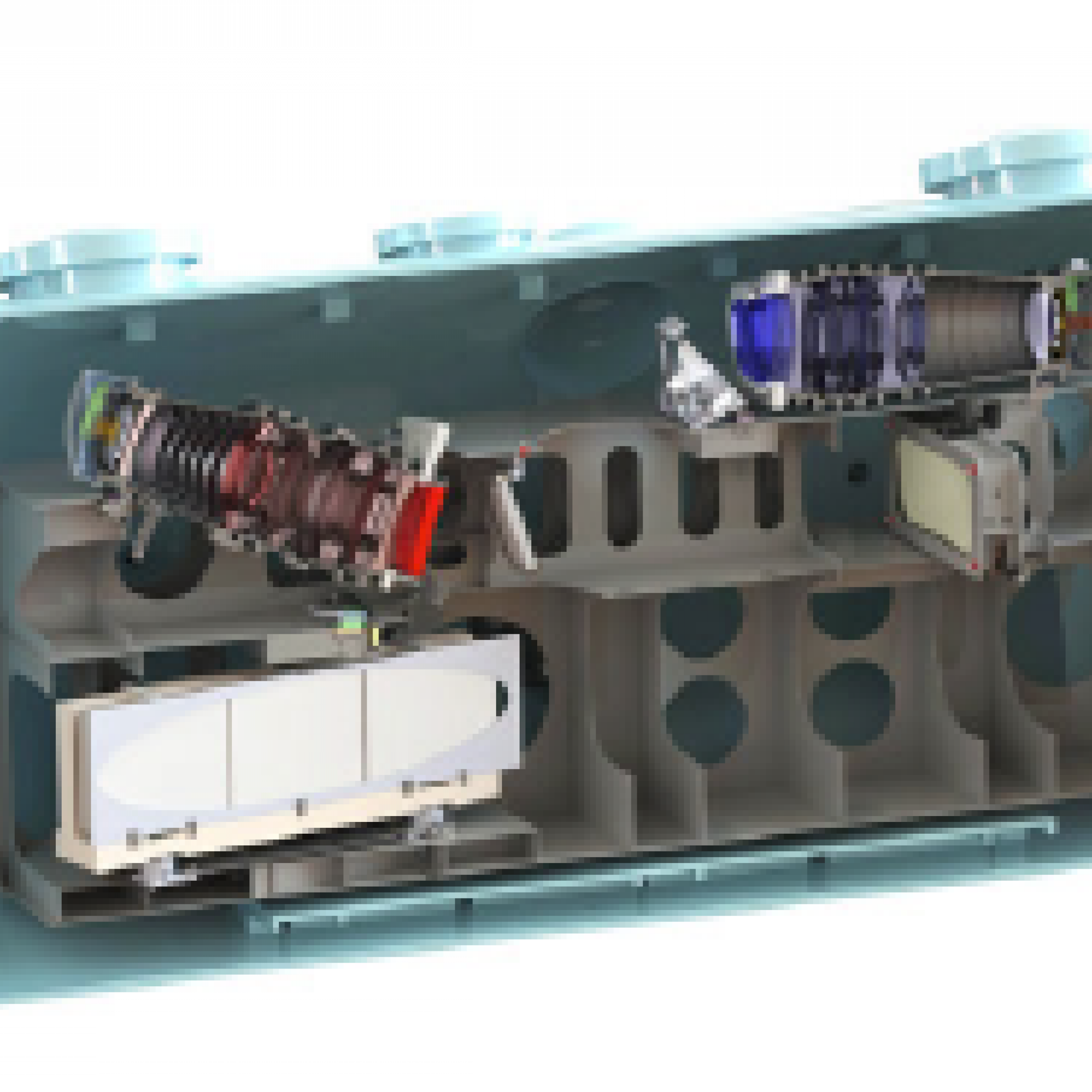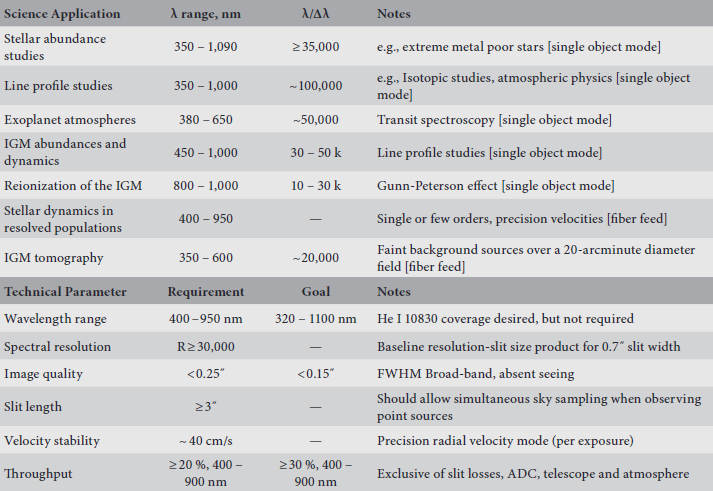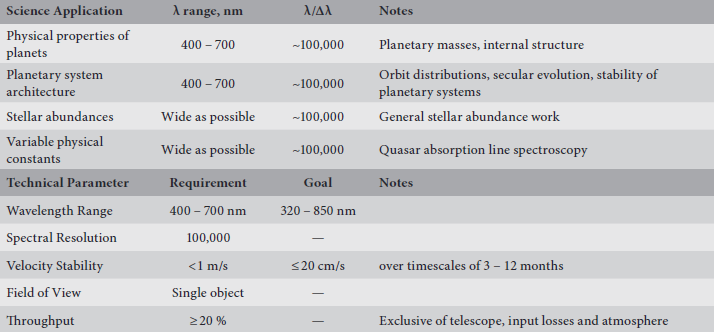
GMT-CONSORTIUM LARGE EARTH FINDER - G-CLEF
The GMT-Consortium Large Earth Finder - G-CLEF is a visible echelle spectrograph with red and blue channels, capable of operating in natural seeing during GMT early operations. Adaptive optics, when available, will enhance G-CLEF’s power. G-CLEF has a thermally stabilized vacuum enclosure to allow precision radial velocity (PRV) measurements (accurate to at least 50 cm/s, with a goal of 10 cm/s). This large instrument mounts at the gravity invariant station on the azimuth platform. Depending on the selected fiber input size, G-CLEF provides spectral resolving powers (λ /Δλ) of 20,000, 45,000, or 100,000 (see the Table below). G-CLEF can be fed by the MANIFEST multi-fiber feed to provide full spectral coverage of ~5 objects, or partial spectral coverage of up to ~40 objects if the spectral coverage is limited to two or three echelle orders. With GLAO, the throughputs of the PRV modes improve by ~25%, and the high-throughput mode improves by ~5%. Higher order wavefront sensors can be added to G-CLEF in the future to enable it to work with NGAO, which will improve its throughput by up to a factor of two and improve the velocity precision due to the higher stability of the input image.
Science with G-CLEF:
Scientific and technical G-CLEF requirements are summarized in the tables below. G-CLEF will be the first science instrument delivered to the GMT. It will provide unique capabilities on the ELT landscape as it is the only high-resolution visible spectrograph planned for the first decade of use on the three ELTs. G-CLEF will enable observations in many areas of astrophysics. Some highly-anticipated observations include:
- Characterizing the most metal poor stars, such as the [Fe/H]<–7.1 star SMSS J031300.36-670839.3
- Measuring exoplanet masses, possibly as small as Mars around an M-star
- Finding O2 in exoplanet atmospheres using transmission spectra
Summary of key observing modes for G-CLEF:

Notes: High Throughput mode is appropriate for faint sources such as quasars and low metallicity stars; Precisions Radial Velocity mode is appropriate for observations of extrasolar Earth-mass planets. Multi-object Spectroscopy mode will be ideal for situations in which high multiplexing enables efficient observation of many sources at one time. Examples include chemical abundances of metal-poor stars in the Local Group or stellar dynamics of dark-matter dominated dwarf galaxies.
Scientific and technical requirements for G-CLEF in standard use:

Scientific and technical requirements for the PRV mode of G-CLEF:

Brazilian participation in G-CLEF:
In 2018 G-CLEF was chosen by the GMT Organization and approved by the GMT Board as the first scientific instrument to be mounted on the telescope at first light (together with the commissioning camera ComCam). This instrument has received full support from the observatory and there is great interest of GMTBrO group to find ways to collaborate with the group in Harvard and SAO. So far, GMTBrO had one small but important contribution to the instrument in AO development: the use of Adaptive Optics techniques to enhance the efficiency of the G-CLEF instrument by increasing the light input into its fibers.
The G-CLEF group is investigating what are the next steps and if the prototype for the Magellan telescope will be built. From the beginning of 2020, GMTBrO will be responsible for the design, assembly and test of the G-CLEF’s Exposure Meter. The exposure meter is responsible for calibrations of G-CLEF. It will account for chromatic atmospheric effects on barycentric corrections of Doppler radial velocity measurements. The optical and mechanical design of this auxiliary spectrograph will be conceived and finalized at IAG/USP, followed by the instrument assembly and testing. Given that such a spectrograph could also be used as a stand-alone one, its design will be optimized so that, in the future, copies of such a low-cost, high throughput, low resolution spectrograph can also be used on small survey telescopes. A number of GMTBrO members will be involved in these activities.
GMTBrO 2025